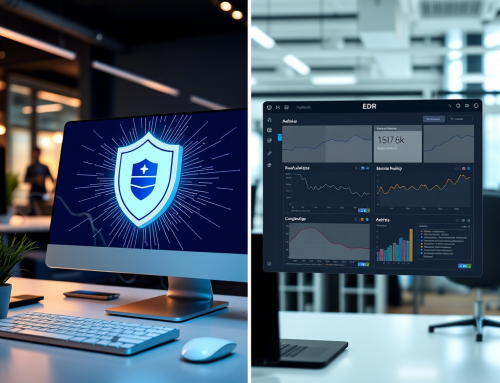Cyber threats are constantly evolving, and they can have devastating consequences for businesses, governments, and individual users alike. From financial loss and stolen data to disrupted operations, the risks are significant. To stay ahead, it’s crucial to understand the most common cyber threats and how to mitigate them effectively. Whether you’re an IT security expert or a homeowner managing a smart device, this guide is for you.
1. Phishing
What It Is:
Phishing attacks involve tricking users into revealing sensitive information, such as usernames, passwords, or financial details, through deceptive emails or messages.
Real-World Example:
The infamous attack on a major social media company in 2020 originated from a phishing scam. Employees were deceived into providing access credentials, leading to compromised accounts of high-profile users.
How to Mitigate It:
- Employee Training: Educate employees about recognizing suspicious emails and links.
- Email Filters: Implement spam and phishing filters to flag suspicious emails.
- Multi-Factor Authentication (MFA): Even if credentials are stolen, MFA adds an extra layer of protection.
2. Ransomware
What It Is:
Ransomware encrypts a victim’s files and demands payment for the decryption key, locking users out of critical data.
Real-World Example:
The 2017 WannaCry attack affected over 300,000 computers globally, crippling healthcare services, governments, and corporations.
How to Mitigate It:
- Regular Backups: Ensure all critical data is backed up and stored offline.
- Software Updates: Keep operating systems and software up-to-date to patch vulnerabilities.
- Endpoint Security Solutions: Deploy robust anti-ransomware tools.
3. Distributed Denial of Service (DDoS) Attacks
What It Is:
A DDoS attack floods your network or server with traffic, making it unavailable to legitimate users.
Real-World Example:
A major DNS provider was hit with a DDoS attack in 2016, temporarily taking down websites like Netflix, Twitter, and PayPal.
How to Mitigate It:
- Traffic Monitoring: Use tools to identify and filter unusual traffic patterns.
- Content Delivery Networks (CDNs): CDNs help distribute and manage traffic more effectively.
- Firewall Rules: Implement application firewalls to block malicious requests.
4. Malware
What It Is:
Malware encompasses a variety of harmful software, including viruses, worms, and trojans, that infiltrate systems to disrupt operations or steal data.
Real-World Example:
The infamous Stuxnet worm targeted industrial systems, reportedly damaging a nuclear facility’s infrastructure.
How to Mitigate It:
- Up-to-Date Antivirus Software: Ensure antivirus tools are installed and regularly updated.
- Careful Download Practices: Avoid downloading files or software from unknown sources.
- Least Privilege Principle: Limit user access to critical systems and data.
5. Social Engineering
What It Is:
Social engineering manipulates individuals into divulging confidential information through psychological tricks.
Real-World Example:
Cybercriminals posed as IT support and convinced employees of a large corporation to share login details, leading to a major data breach.
How to Mitigate It:
- Awareness Campaigns: Train employees on common social engineering tactics.
- Verification Protocols: Always verify the identity of individuals requesting sensitive information.
- Simulated Attacks: Conduct periodic social engineering tests to educate and prepare your team.
6. Insider Threats
What It Is:
An insider threat arises when an employee, contractor, or third party intentionally or unintentionally compromises security.
Real-World Example:
A disgruntled employee leaked critical company data to competitors as revenge for being laid off.
How to Mitigate It:
- User Monitoring: Put systems in place to monitor unusual user activity.
- Access Controls: Restrict access to sensitive data based on role and necessity.
- Exit Protocols: Revoke access rights immediately when an employee leaves the organization.
7. Zero-Day Exploits
What It Is:
Zero-day exploits target vulnerabilities in software before developers can issue a security patch.
Real-World Example:
The 2021 Microsoft Exchange Server hack targeted previously unknown vulnerabilities, compromising thousands of servers globally.
How to Mitigate It:
- Proactive Security Patches: Install updates immediately upon release.
- Threat Intelligence: Utilize AI tools to monitor emerging threats.
- Network Segmentation: Limit the impact of successful intrusions by isolating systems.
8. Credential Stuffing
What It Is:
Hackers use stolen credentials from one data breach to access accounts on other systems.
Real-World Example:
Credential stuffing attacks affected over 160,000 Nintendo accounts in 2020.
How to Mitigate It:
- Unique Passwords: Ensure passwords are unique across platforms.
- Password Managers: Encourage employees and users to use reliable password management tools.
- Multi-Factor Authentication: Add additional verification steps to secure accounts.
9. IoT Vulnerabilities
What It Is:
The Internet of Things (IoT) refers to interconnected devices, such as smart thermostats and cameras. Weak security protocols can make these devices exploitable.
Real-World Example:
Hackers used IoT cameras as entry points to launch DDoS attacks on larger networks.
How to Mitigate It:
- Device Updates: Regularly update IoT devices with the latest firmware.
- Secure Settings: Use strong, unique passwords for all devices, and disable unnecessary features.
- Network Segmentation: Isolate IoT devices from critical systems.
10. Man-in-the-Middle (MITM) Attacks
What It Is:
MITM attacks occur when a cybercriminal intercepts communication between two parties to steal sensitive information.
Real-World Example:
Public Wi-Fi networks are a common avenue for MITM attacks, where attackers eavesdrop on personal and business communication.
How to Mitigate It:
- Encryption: Use encrypted connections (SSL/TLS) for all communications.
- Virtual Private Network (VPN): Promote secure browsing on public networks with a VPN.
- Strong Authentication: Combine MFA and strong passwords to limit access.
The Importance of Proactive Cybersecurity
Cyber threats aren’t slowing down; in fact, they’re becoming more sophisticated by the day. Organizations and individuals alike must adopt proactive cybersecurity measures to stay ahead of attackers. Implementing preventative measures, promoting user awareness, and continuously evolving your defense strategies will help protect your systems and data.
Future Trends in Cyber Threats
The cyber threat landscape is expected to evolve further with advancements in AI, IoT, and 5G connectivity. AI-driven attacks, deepfake phishing, and hyper-targeted ransomware could become even more prevalent. Staying informed and prioritizing advanced cybersecurity measures today will prepare you for the challenges of tomorrow.
Final Thoughts
Every business and individual is a potential target for cyber attacks. By understanding these 10 common cyber threats and actively implementing the recommended mitigation strategies, you can significantly reduce your risk.





